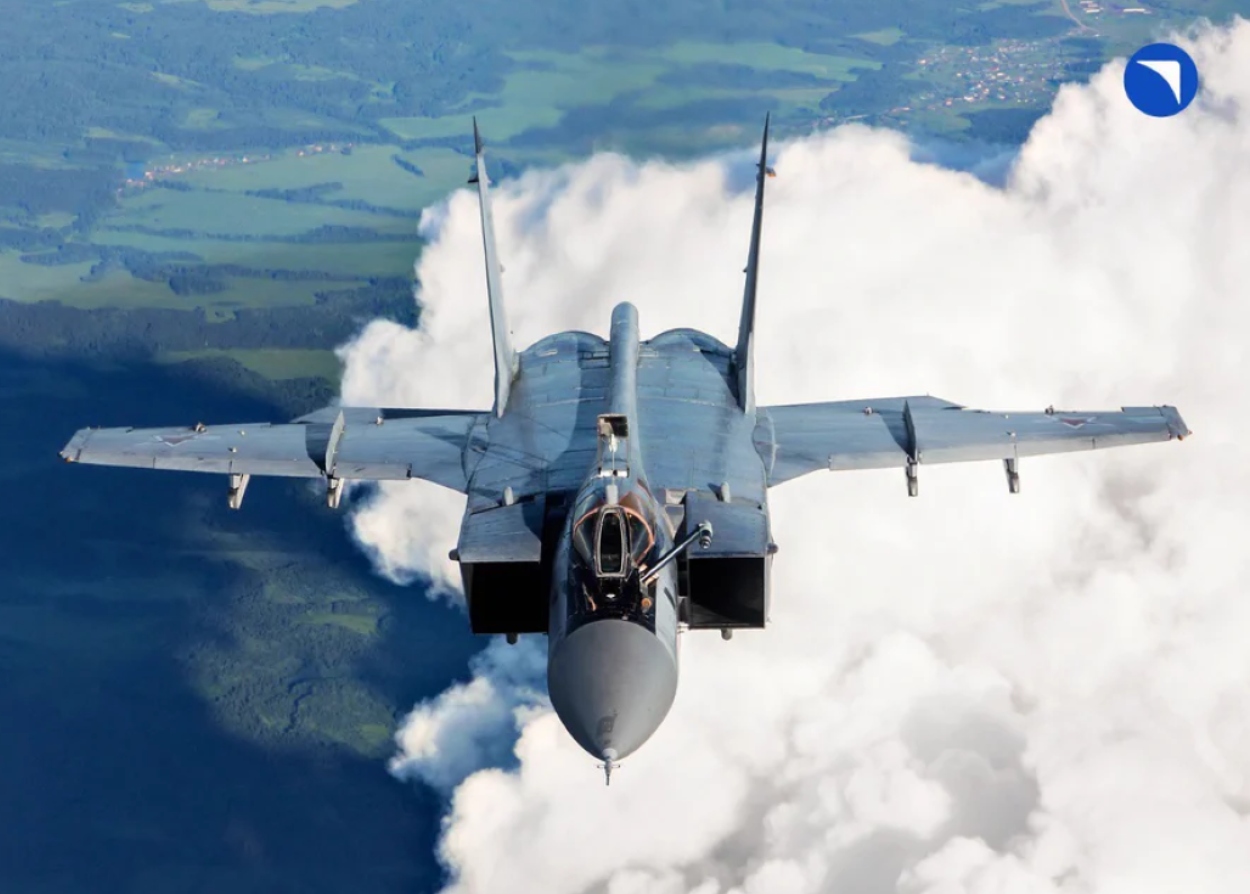Frequently dispatched to intercept NATO warplanes approaching the Russian borders from the north, the MiG-31 interceptor aircraft of the Northern Fleet reportedly practiced dogfighting in the stratosphere above the Barents Sea.
Aircraft Carrier: US, India ‘Bet Big’ On Fighter Jet-Armed Warships To Shift Balance Of Power In The Region
This was announced by the Russian Ministry of Defense (MoD) in a statement that read, “The crew of a MiG-31 fighter from a separate composite aviation regiment of the Northern Fleet practiced elements of aerial combat in the stratosphere.”
A notional hostile aircraft approached the Russian borders as part of the drill. The Defense Ministry explained that a MiG-31 fighter jet from the Northern Fleet’s air defense alert troops was scrambled to identify the target and prevent it from violating Russian airspace.
During the drill, a MiG-31 fighter from the Northern Fleet ascended to a height of almost 11,000 meters or 11 kilometers over the Barents Sea, intercepting and theoretically destroying the intruder. The MiG-31 Foxhound is famous for its ability to attain high altitudes in flight.
Interestingly, the drills come days after the Russian Air Force had to dispatch a MiG-31 Foxhound aircraft to intercept a US Navy P-8A Poseidon reconnaissance aircraft approaching the Russian border over the Norwegian Sea.
“To identify an air target and prevent violation of the Russian state border, a MiG-31 fighter from the Northern Fleet air defense forces on duty was scrambled,” the Russian MoD said on October 6.
In the wake of the Ukraine war, western military aircraft have been manning the airspace near Ukraine round the clock, leading to frequent engagements with Russian fighter jets. Some instances have also seen the interception of fighter jets, risking fears of a miscalculation and escalation amid rising tensions.
Due to the war in Ukraine and the sharply deteriorating relations between the West and Moscow, the frostbitten borderlands between Norway and Russia are usually on high alert. The NATO alliance has moved dramatically to secure its influence in the north, with Finland and Sweden joining their neighbor Norway, to Russia’s dismay.
https://twitter.com/Ank_kumar/status/1710248694543511592
Last month, the Russian Ministry of Defense announced that MiG-31 fighter jets conducted mock interception of simulated enemy cruise missiles over the Chukchi Sea during the Finval-2023 exercises. The MiG-31 crews successfully engaged and destroyed the incoming aerial targets utilizing air-to-air missiles.
This is not the first time that the MiG-31 has practiced dogfighting in the upper layer of the atmosphere. In 2019, the pilots of upgraded MiG-31BM fighter planes engaged in their first-ever stratospheric dogfight over the Kamchatka Peninsula in the Russian Far East, practicing intercepts of a fictitious airspace incursion during training. A similar drill in Kamchatka was conducted in 2020.
The Russian Navy’s Baltic Fleet announced in September last year that Russian MiG-31 fighter jets practiced missile attacks during maneuvers in the stratosphere. “The pilots of MiG-31 aircraft practiced flight maneuvers in the stratosphere, trained their skills to escape attacks from mock enemy aircraft and relocate to operational airfields of the region.”
These stratospheric drills are, thus, pretty much regular for the jet. However, the location is somewhat significant given that the Northern Military District has grown significantly in the wake of the Ukraine war.
Russia’s MiG-31 Is A Force To Reckon With
A long-range, supersonic, two-seat, all-weather fighter jet, the MiG-31 was first produced by the Soviet Union and later by Russia. The aircraft is equipped with a 23mm six-barrel gun. The modifications carried out on the MiG-31 allow it to carry a variety of air-to-air and air-to-surface missiles, air bombs, and hypersonic aero-ballistic missiles.
The Russian Ministry of Defense has stated on several occasions in the recent past that these fighter jets are deployed for defense patrols in assigned areas. Once the crew locates a target and confirms it is a hostile aircraft, air-to-air missiles are launched to eliminate it.
Several MiG-31 fighters have been upgraded to MiG-31BM (Bolshaya Modernizatsiya/Deep Modernization). According to the Russians, the MiG-31BM is 2.6 times more effective, and the enhanced Zaslon-M radar detection range for air targets has been raised to 400 kilometers. Moreover, the aircraft can engage up to eight targets simultaneously while autonomously tracking up to 24 targets.

The fighter can dash at Mach 2.5 briefly and fly at around 18 kilometers altitude for over 700 kilometers. The MiG-31 interceptor flying high-altitude patrols has reportedly shot down several Ukrainian fighters by firing its potent long-range Vympel R-37M air-to-air missiles.
The MiG-31s have operated virtually unopposed because Ukraine’s fighters lack range, speed, or altitude. Six R-37Ms were reportedly launched at the Ukrainian Air Force per day in October 2022, according to a report by the Royal United Services Institute (RUSI). These long-range missiles kept the Ukrainian fighters at bay, allowing the MiG-31s to attack the hostile jets.
Officials and military experts in the West have often cast doubt on the MiG-31’s capability to perform well in a dogfight since it was designed to carry out intercepts, conduct escort missions, and fire long-range missiles without directly engaging in an aerial battle.
However, with rapidly evolving capabilities owing to modifications and upgrades, the Russian Air Force has been very confident about the aircraft’s ability to engage the enemy in an aerial showdown and has essentially been practicing the same.
- Contact the author at sakshi.tiwari9555 (at) gmail.com
- Follow EurAsian Times on Google News